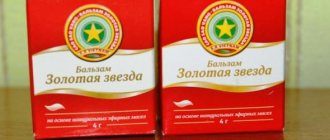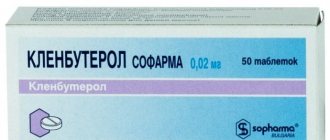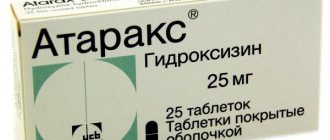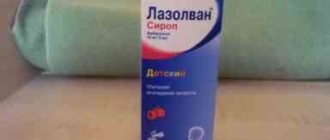Cough is a kind of protective mechanism of the human body, designed to cleanse the bronchi and trachea. When diagnosing a cough, it is necessary to distinguish between its temporary characteristics: acute; recurrent; persistent and prolonged cough.
The appearance of an acute cough is characteristic of acute viral catarrhal lesions, with croup, tracheitis, laryngitis, bronchitis and pneumonia. With such lesions, the cough is initially dry (non-productive) - it is usually intrusive and is not accompanied by mucus (sputum). With tracheitis and laryngitis, the cough can acquire a specific barking character. With laryngitis, a cough is always accompanied by a sore throat. With pneumonia, the cough is wet from the very beginning; such a cough is also called deep.
The appearance of a wet (productive) cough is usually characteristic of bronchitis, in which case the cough impulse ends with the discharge of sputum. Coughing attacks always occur when it accumulates.
When differential diagnosis of acute cough, it is very important to make sure that it is associated with any infection (fever, catarrhal syndrome). In children, signs of acute respiratory viral infections (ARVI) are considered to be difficulty breathing and hoarseness. The presence of moist wheezing in the lungs usually indicates bronchitis: in older children the wheezing is large or medium bubbling, in small children it is small bubbling, this makes it possible to diagnose bronchiolitis.
A persistent cough is a type of cough that can last more than 2 weeks. This type of cough is observed quite often; this picture is typical for the course of acute bronchitis. Most often, this is due not so much to the presence of an inflammatory process, but rather to post-infectious hyperproduction of secretions (sputum), sometimes this can be associated with hypersensitivity of cough receptors. To decipher such a cough, it is necessary to take into account the age of the child.
The presence of a lingering cough in children of preschool and early age is often associated with the constant flow of mucus from the nasopharynx into the larynx in the presence of long-term nasopharyngitis, adenoiditis and adenoid hypertrophy; Unlike bronchitis, a lingering cough is not accompanied by wheezing in the lungs, but is superficial and disappears when the inflammatory process in the nasopharynx is treated. Prolonged bronchitis can last up to 2–4 weeks and is considered common in preschool children. It is also called recurrent bronchitis.
In school-age children, a dry, lingering cough can last up to six weeks; this is typical for tracheitis and tracheobronchitis. This cough is usually very painful and paroxysmal. The attack always ends with the coughing up of lumps of dense mucus (fibrinous deposits).
The presence of a recurrent cough is characteristic, first of all, of bronchial asthma - this is one of the most basic complaints of those who have not yet been diagnosed with asthma. The appearance of a cough with every acute respiratory viral infection is also characteristic of recurrent bronchitis - it is usually protracted, wet, and its duration can exceed 2 weeks.
A persistent, prolonged cough can be observed in chronic diseases of the respiratory system. It can weaken or intensify over certain periods of time. It is considered fundamentally important that the child practically never stops coughing.
A persistent dry cough with a change in voice may indicate the presence of laryngeal papillomatosis. A dry cough with chest deformities, shortness of breath, and signs of cor pulmonale is usually characteristic of fibrosing alveolitis.
Psychogenic cough also occupies special attention; it is also characterized by a constant cough. It is always dry and is observed exclusively during the daytime; in the evening and during sleep it disappears. Its distinctive feature is considered to be regularity and high frequency (up to 4–8 coughs per minute). This cough stops while talking and eating. Psychogenic cough is a reaction to stressful situations at school and at home. Coughing attacks are usually provoked by topics that are unpleasant and depressing for the child. The reasons for the strengthening of the cough reflex are often increased irritability and anxiety of parents and the concentration of special attention on the symptoms of respiratory infections. Such children require an in-depth examination in order to exclude the presence of organic pathology. In some cases, trial treatment with steroid aerosols and antispasmodics is used.
Coughing is a rather complex protective reflex given by nature. It is the cough that clears the airways of phlegm, foreign bodies and dust. In most cases, cough occurs due to irritation of the nerve endings that are located in the mucous membrane of the respiratory tract (bronchi, trachea, larynx). Then the impulse is sent to the cough center and from there it goes to the muscles of the larynx, diaphragm, bronchi, pectoral muscles, and pectoral abdominal muscles. To ensure increased pressure in the airways and inside the chest, the muscles contract. At the peak of contraction, the glottis opens and a strong exhalation occurs, accompanied by a sound - this is a cough.
The cough center also receives other impulses not related to the respiratory system. The nerve endings that go to the cough center are also located in the esophagus, stomach, heart, ear canals, diaphragm and in some segments of the brain. This explains the fact that cough is accompanied by diseases that are in no way related to pathologies of the respiratory system (diaphragmatic hernia, heart defects). The cough center is controlled by the cerebral cortex, so anyone can cough at the right time (voluntary cough). But a cough provoked by an illness is sometimes impossible to stop (involuntary cough).
Types of cough
A cough without phlegm is called dry
. It occurs due to irritation of cough receptors by foreign bodies and neoplasms, as a result of swelling of the mucous membrane or bronchial spasm. Dry cough is observed with heart defects, pericarditis, and diseases of the external ear and nervous system. Typically, a dry cough becomes the first symptom of a respiratory viral infection, tracheitis, laryngitis and bronchial tumors. A prolonged dry cough is treated with mustard plasters, antitussive drugs and compresses on the chest.
A cough that is accompanied by sputum is called a wet cough.
. A wet cough is a characteristic manifestation of diseases of the respiratory system. It appears due to increased production of bronchial secretions (bronchial asthma, bronchitis), discharge of pus from cavities (tuberculosis, lung abscess), and leakage of blood plasma into the lungs (pulmonary edema). By the type of sputum, one can make a judgment about the nature of the disease: clear sputum is separated in case of asthma, sputum is separated in case of pneumonia, purulent sputum is separated in case of bronchiectasis or lung abscess. Wet coughs are treated with drugs that reduce the formation of sputum and promote its removal.
Based on the frequency of occurrence and duration of cough, a distinction is made between periodic and constant cough.
, paroxysmal cough and isolated cough tremors. The latter are considered the most dangerous because they can lead to fainting or respiratory arrest.
Depending on the duration, cough is divided into chronic and acute.
. Acute is a cough that lasts no more than three months. The usual cause of acute cough is respiratory infections. If the cough lasts more than three months, then we can talk about a chronic cough. It is a companion to bronchial asthma, chronic bronchitis, tumor diseases and heart defects.
Types of cough: classification, causes, diagnosis, treatment
Coughing is a reflex that keeps the throat and airways clear. Although irritating in nature, it helps the body heal and protect itself. Since we are talking about a defense mechanism, it can be perceived as a positive symptom. Types of cough should also be taken into account.
What is a cough and how does it occur?
Cough (lat. tussis) is a strong and usually loud exhalation. Coughing (expectoration, expectoration) is a protective reflex action aimed at freeing the airways from mucus, sputum and other foreign bodies that block or irritate them.
Usually the reflex occurs due to chemical or mechanical irritation of receptors on the mucous membrane. It begins with a short inhalation followed by a strong exhalation.
Determining the presence (absence) of expectorated sputum, sound and other characteristics is a way to determine the type of cough in a child and an adult. The duration is also taken into account (acute, chronic cough).
Cough in adults
Associated symptoms
A sick person hears sounds from the throat, aimed at relaxing the respiratory tract. The accompanying symptoms depend on the factor that provoked this reaction (choking, hoarseness, etc.).
Diseases accompanied by cough
There are many causes of cough. In addition to conditions associated with disorders of the respiratory tract (colds, bronchitis), they include diseases of the digestive system, circulatory system (secondary etiology) due to their connection with the respiratory system.
The most common causes in infants:
- aspiration;
- obstructive bronchitis;
- laryngotracheomalacia;
- compression of the airways by blood vessels;
- cystic fibrosis;
- viral infections (RSV, parainfluenza, adenoviruses);
- whooping cough (rare);
- pneumocystis;
- tuberculosis (from mother);
- congenital heart defects;
- idiopathic cardiac hemosiderosis;
- influence of passive smoking.
The most common causes in children under 5 years of age:
- aspiration;
- bronchial asthma;
- bronchiectasis;
- cystic fibrosis;
- primary ciliary dyskinesia;
- immunodeficiency;
- ARVI;
- chronic sinusitis, otitis;
- tuberculosis.
The most common causes in schoolchildren, adolescents, and adults:
- bronchial asthma;
- bronchiectasis;
- primary ciliary dyskinesia;
- immunodeficiency;
- chronic sinusitis;
- otitis;
- active or passive smoking;
- influence of the work environment;
- tumors of the lungs and mediastinum;
- psychogenic factors.
ARVI
Classifications of the main types of cough
It is important to know what types of cough there are and find out the cause. This is necessary to determine the correct therapeutic approach. There are several types and subtypes.
By the presence and nature of sputum
Based on the nature of sputum, cough is divided into 2 types (in children, infants, adults):
- Dry, unproductive. This cough is irritating, without producing sputum. Its most common source is a viral or bacterial respiratory tract infection.
- Wet, productive. A wet cough produces excess mucus. It settles on the mucous membrane of the respiratory tract. Coughing is a mechanism for removing it.
By time parameter
Depending on the duration of cough, its types in adults and children are divided as follows:
- Sudden. In adults, it is most often caused by staying in a dusty room. In children, this may indicate that a foreign object has entered the respiratory tract and is interfering with breathing. In case of suffocation, specialized assistance is required.
- Spicy. Lasts 2–3 weeks. The most common pathogen is a bacterial disease. It occurs relatively often, as it accompanies colds and flu.
- Subacute. May last up to 2 months. Caused by atypical bacterial pathogens (chlamydia, mycoplasma), some viruses.
- Chronic. Lasts more than 3 months. This type is often found in smokers or asthmatics, and up to 20% of patients are children.
Subtypes depending on duration:
- Continuous. Appears periodically throughout the day.
- Paroxysmal. Occurs in attacks, 1–2 times a day.
- Night. Disturbs at night.
- Morning. Appears in the morning.
Chlamydia
By sound
The sound of a cough is the next factor that determines its types in adults and children.
- Harsh, barking, sometimes accompanied by wheezing. This type often accompanies laryngitis.
- Whistling. It often occurs after physical activity and is accompanied by shortness of breath.
- Dull, expressionless. Occurs when there is insufficient connection of the ligaments.
- Wheezing. Polyps, tumors of the ligaments.
By intensity
In terms of intensity, types of cough in children and adults include:
- low intensity;
- expressed;
- grueling (very intense, exhausting).
Other types
Other types are also distinguished, depending on the cause. Cough associated with the following disorders is classified:
- inflammation, cancer;
- allergic swelling of the mucous membrane;
- foreign substance;
- blockage or increased pressure in the pulmonary circulation (heart failure);
- external pressure on the tussigen zone;
- hysteria, nervous lability (psychogenic factors);
- long-term treatment with ACE inhibitors.
A persistent cough may indicate sinus inflammation or bronchitis.
When the temperature rises and the reflex increases (even to the point of vomiting), whooping cough may occur, cases of which have recently become more frequent (in connection with this, children are re-vaccinated at 10–11 years of age).
Pneumonia exhibits similar symptoms. These diseases are completely curable with timely treatment. Lack of therapy is fraught with serious complications.
Hysteria
Diagnosis and basic methods of treating cough
A short-term cough, accompanied by a sore throat and fever, usually has an infectious cause. If the patient is in good general condition, only a basic examination is performed, after which treatment is prescribed.
| Specialization | Type of examination |
| Therapist | Clinical examination, request for targeted examination by relevant experts |
| Pneumologist | Spirometry, bronchotrophic tests, bronchoscopy, sputum cytology |
| Otorhinolaryngologist | ENT examination, nasal secretion cytology, phoniatric examination |
| Allergist | Skin tests, specific bronchotrophic tests, other immunological examinations |
| Gastroenterologist | Esophagography, esophageal pH |
| Cardiologist | ECG, ECHO and other examinations, as directed |
| Pediatrician | Determining the optimal treatment for children |
| Radiologist | X-ray of the chest, sinuses, CT |
| Bacteriologist, psychiatrist, neurologist | Special procedure after consultation with other specialists |
When choosing a therapeutic approach for cough, it is important to take into account that individual types and their treatment are interrelated. Therefore, before prescribing a specific drug, it is necessary to determine the type of reflex.
When sputum is discharged, mucolytics are prescribed - drugs that facilitate coughing. The most commonly used medications are:
- ACC;
- Bromhexine;
- Ambrobene;
- Ambroxol;
- Lazolvan.
It is advisable to treat dry cough with antitussive therapy (Stoptussin).
Visiting a therapist
Cough prevention
Everyday life brings many problems that lead to cough. They cannot be avoided, but the threat can be minimized.
The main rule is to limit direct contact with sick people. During epidemics (particularly ARVI), it is necessary to emphasize caution when staying in a risky environment. These are places where people gather - at work, in vehicles, in large groups.
The next recommendation is to stop smoking and avoid smoky rooms. It is important to maintain a clean work and home environment, frequently ventilate, and humidify the air.
Aromatherapy (baths, inhalations, aroma lamps) is also useful for healthy respiratory tracts. A good way to cleanse them is to visit a salt cave.
Source: https://kashlynet.ru/vidy/klassifikatsiya/
Diagnosis and treatment of cough
In many cases, the disease can be diagnosed only by coughing (ARVI, whooping cough) and by listening to the lungs. Based on this information, the doctor can already prescribe treatment. Of course, more complex cases require a comprehensive examination, including instrumental and laboratory research methods (spirography, X-ray, ultrasound, bronchoscopy, sputum examination). Anti-inflammatory, antibacterial and antiallergic drugs are prescribed. The prognosis is usually favorable - the cough goes away along with the disease. A cough cannot be ignored, since some diseases accompanied by a cough are dangerous to the patient’s health (tuberculosis). Only a specialist can make the correct diagnosis and prescribe adequate treatment.
A person’s cough occurs as a reflex when the body needs to clear the respiratory tract from the introduction of foreign bodies or pathogenic flora. Whatever enters the body through the respiratory tract, a cough reflex occurs. When staying in a dusty area or room, the air is saturated with aggressive reagents, the cough practically does not subside - it performs the function of cleansing the respiratory system.
The ciliated epithelium is constantly working, mucus is secreted, which tries to “wash” foreign elements from the body.
Types of cough and their treatment
To clearly understand what disease accompanies a cough, it is necessary to distinguish between the main types of cough and know its key characteristics. According to duration, acute and chronic forms are classified, and according to intensity, normal coughing and hysterical cough.
In addition, they are divided according to the presence of secretions: wet, dry. Considerable importance is given to the issue of ascertaining the nature of the secreted sputum, which can be with purulent impurities, with bloody discharge, or watery. Based on the timbre of the cough, a loud, muffled appearance can be distinguished.
The time factor has a significant impact on the accurate diagnosis, and therefore the competent selection of medications. When it occurs: in the morning, in the evening, or as an annoyance throughout the day. The seasonality of cough (spring, winter) is also a weighty argument that should not be discounted when diagnosing. The doctor takes all of the above into account when determining the disease, a sign of which is the cough that is tormenting you.
It is strongly not recommended to do this on your own. Be sure to call a doctor or go to a clinic.
Types of cough
There are several types of cough in children and adults based on their clinical picture.
Acute lasts no more than 2-3 weeks. It is not independent or protective in nature, but is a symptom of diseases from the ARVI group and causing complications in the area of the respiratory tract. After the patient recovers, the cough disappears.
The duration of a lingering cough is measured in months - it appears in most cases as a complication after the underlying disease.
It must be eliminated, as this is the main sign of the disease becoming chronic.
Chronic cough can be a symptom of diseases of the respiratory system, such as tuberculosis or asthma. It also appears in patients with neurological pathologies, smokers, and allergy sufferers upon contact with an allergen. Even strong odors can cause it. It no longer performs a protective function, but, on the contrary, disrupts the functioning of the respiratory system.
Due to constant attacks, heart function deteriorates, the following consequences appear:
- enphysema;
- spontaneous pneumothorax;
- hernias of internal organs;
- bronchiectasis;
- heart rhythm disturbances.
It is possible to classify the types of cough in adults and children by the presence or absence of sputum, as well as by its quality.
A dry cough is also called unproductive; it occurs when there is severe inflammation of the respiratory tract. The mucous membrane lining them swells, sputum does not separate or, thickening, sticks to the walls, making breathing difficult and irritating the receptors. This condition is exhausting and debilitating; in severe cases, centrally acting antitussives are prescribed.
Wet expectoration is productive. The mucus released during it removes toxins from the body and cleanses the respiratory organs of pathogenic flora.
A cough that occurs as a result of a viral or bacterial disease changes its type during recovery - from dry to wet.
By the type of sputum when coughing, you can determine which pathogenic flora provoked the disease. With a viral infection, the discharge is liquid and clear; with bacterial - thick purulent.
If blood in the sputum after a protracted attack appears once, it is bright, there is not much of it - this is a sign of a burst vessel. If blood clots occur constantly, this indicates a more serious condition. This is how tuberculosis, heart failure, and cancer of the lungs, trachea, and larynx manifest themselves.
Separately, it is necessary to say about allergic attacks. First there is a sore throat, and you always want to clear your throat. In the future, an allergy in the form of a cough can cause it to switch to a wet type.
An allergy, if it is not treated or the allergen that causes this condition cannot be identified, significantly reduces the immune status of the patient, which provokes the addition of an infection. In this case, the allergic dry cough is replaced by a wet one.
The nature of the cough symptom may indicate the localization of the inflammatory process.
It is especially important to determine the types of cough in children in order to correctly prescribe treatment:
- A silent cough is a symptom of tuberculosis or heart failure;
- Paroxysmal in children is in most cases a sign of whooping cough; in adults, such symptoms are more likely to indicate COPD - chronic obstructive pulmonary disease - or allergies;
- Whistling sounds in adults indicate COPD and asthma, in children - acute obstructive bronchitis or bronchiolitis;
- A barking cough in children that appears suddenly should alert adults. This symptom is characteristic of the occurrence of false croup or indicates increasing swelling of the larynx;
- An attack on inspiration is a sign of inflammation of the pleura;
- If during one coughing attack different sounds appear, then in adults we can talk about the appearance of a cavity in the lungs. If children cough like this, then most likely there is a foreign body stuck in the respiratory tract.
Even experienced doctors try to support their guesses with instrumental and laboratory tests to confirm the diagnosis.
Elimination of cough attacks
Treatment begins only after confirmation of the diagnosis. The cough itself is not treated - it is only a symptom of the disease. The only exception is when attacks are caused by the penetration of a foreign body into the respiratory organs.
After removing the foreign object, the condition returns to normal.
Depending on the type and origin of the attacks, the following medications are prescribed for treatment:
- Severe attacks are relieved with drugs containing ephedrine, glaucine, and codeine. They block the cough center;
- As soon as the type of cough changes from dry to wet, they are canceled and mucolytics are prescribed: Lazolvan, Ambroxol, Bromhexine and the like;
- If cough syndrome is accompanied by a bacterial infection, antibiotics are added; for viral infection - antiviral drugs; allergies – antihistamines and steroids.
In addition to medications, inhalations, compresses, and rubbing are used.
If the disease occurs with an increase in temperature, it is necessary to expand the drinking regime - this not only helps remove toxins and restores the water-salt balance in the body, but also helps to dilute sputum and make it easier to eliminate.
Modern drugs
Currently, in the treatment of inflammatory diseases of the respiratory system, doctors prescribe relatively new drugs “Ascoril” and “Erespal”.
"Erespal". This medicine has an anti-inflammatory and bronchodilator effect at the same time. In complex therapy, it eliminates swelling of the mucous membranes of the lower and upper respiratory tract, reduces the intensity of attacks. It can be prescribed to children from birth.
For what type of cough is Erespal prescribed? There are no restrictions on its use in cough therapy - it can be used at any stage to eliminate diseases of the respiratory system of all parts, including the reflex cough symptom in inflammation of the middle ear and paranasal sinuses.
Under its action, histamine H1 receptors and alpha-adrenergic receptors are blocked. This action eliminates spasm of the smooth muscles of the bronchi and blocks the production of liquid secretion, and therefore the swelling decreases.
For what type of cough is Ascoril prescribed? This remedy is recommended to eliminate dry cough in its acute stage. The main component - guinesin - stimulates the production of sputum, its liquefaction and release.
It is used in complex therapy for the treatment of chronic lung diseases: pneumoconiosis, tuberculosis, bronchitis, emphysema and the like.
When using medications, you must carefully read the instructions to have an idea of the restrictions on use and the possible occurrence of side effects.
The use of different dosage forms increases the possibility of using modern medicines for the treatment of cough. For example, if you have a history of diabetes mellitus, then instead of syrup you should purchase Erespal in tablets. Although it should be taken into account - in this case, the use of the medicine is limited by the age of the patient - up to 14 years of age, tablets are taken only in extreme cases.
It is not recommended to self-prescribe even the most modern medications for the treatment of cough.
All medical products have a general effect on the body, and only a doctor can decide which drug is safer and more effective.
Cough
- a successive series of expiratory movements accompanied by closure of the glottis.
Cause of cough
- irritation affecting the mucous membrane of the larynx, trachea and bronchi (cold, damp air, inhalation of harmful gases, smoke, dust, secretions accumulating in the bronchi during various pulmonary diseases, pleurisy).
Cough reflex
is a rather complex reflex, during which the respiratory muscles contract, which contributes to the occurrence of a strong push-like release of air masses from the lung cavity.
The cough reflex is triggered by irritation of sensitive receptors located in the larynx, trachea, large bronchi, and pleura. When you cough, the air coming out of the respiratory tract under high pressure carries with it phlegm and foreign bodies. Thus, the physiological role of cough is to clear the airways
of accumulated mucus or foreign bodies that have penetrated there. This cough function persists during many diseases accompanied by coughing (for example, with bronchitis, mucus is removed from the bronchi due to coughing). This fact is extremely important to consider when planning treatment for patients with cough. The central issue in the problem of cough is determining its cause and mechanism of occurrence. The causes of cough, as is known, can be very different.
1. Physiological cough.
It is an absolutely normal (and even necessary) phenomenon of our daily life. A periodically occurring physiological cough clears the airways of sputum accumulating in them or of crumbs and other foreign bodies that have fallen into the “wrong throat.” Many people, however, often confuse a physiological cough with a pathological one, that is, with a cough that occurs against the background of some disease. Parents especially often raise false alarms. All parents should know that healthy children cough up to 15-20 times a day, and a physiological cough is especially common in the morning. This cough in children is associated with the need to free the bronchi from mucus accumulated overnight. Inexperienced parents may mistake such a physiological cough for a manifestation of an illness and begin independent treatment (for example, with expectorants), which only worsens the cough. In infants, physiological cough is very common. This is due to the fact that during feeding, some of the food enters the trachea and provokes a cough reflex. Also, infants often cough while crying, which also should not cause concern for parents. Older children (starting from 4-5 months of age) can use coughing to attract the attention of adults, who, upon hearing a cough, immediately rush to the baby. Having noticed such a cough, you should react to it calmly, since excess excitement or attention can only reinforce this child’s habit.
2. Pathological cough.
Pathological cough, unlike physiological cough, occurs against the background of various respiratory diseases. Physiological cough, as mentioned above, is always the same type and usually does not cause any problems in terms of diagnosis. Pathological cough, on the contrary, can be of a very diverse nature, which largely depends on the nature of the disease that caused the cough. Establishing individual characteristics of a cough is extremely important for the correct diagnosis and treatment of a disease accompanied by a cough.
3. Dry cough
. This type of cough reflex does not bring any relief to the patient; it can occur with dyskinesia of the trachea and bronchi, with pathological processes that occur in the tussigenic zones. In addition, it can occur during pneumothorax, when a foreign body enters the respiratory tract, during disseminated or diffuse processes in the lungs (pneumonitis, cancer, tuberculosis, metastatic tumors, etc.).
4. Wet cough
. Cough with sputum can occur with various diseases that are accompanied by hypersecretion of bronchial mucus with the formation of exudate (for example, with bronchitis or pneumonia) or with the accumulation of fluid that can enter the respiratory tract from a ruptured cyst. A wet cough usually occurs as fluid (mucus, blood, pus) accumulates in the respiratory tract, but once the irritants are eliminated, it stops, that is, immediately after coughing.
5
.
A cough that manifests itself over time - morning and evening cough
,
night cough
. Morning cough occurs during chronic inflammatory reactions in the upper respiratory tract. This type of cough is common among smokers and is called “smoker’s cough.” In addition, this type of cough occurs with bronchiectasis, lung abscess, and tuberculosis.
6. Constant cough
. This type of cough occurs with chronic diseases of the larynx, trachea, bronchi, pharynx, as well as with circulatory disorders.
7. Intermittent cough
. This type of cough occurs in smokers (especially in the morning), as well as in acute respiratory viral infections, pneumonia, bronchial asthma, emphysema and other diseases.
8. Barking cough
. This type of cough occurs due to inflammatory processes that occur in the larynx and vocal cords. A barking cough occurs with whooping cough, with compression of the trachea by a tumor, with true or false croup, with attacks of hysteria, as well as with laryngitis and other diseases. As a rule, attacks of barking cough are accompanied by attacks of aphonia and hoarseness.
9. Convulsive cough
. Most often, this type of cough occurs at night. It is characterized by frequent coughing shocks, in the intervals between coughs there is a long and loud breath. After the convulsive cough subsides, vomiting may occur. This occurs due to the irritation of the vomiting center.
10. Bitonal cough
. Occurs most often in children with bronchoadenitis. This type of cough is caused by a narrowing of one bronchus, which leads to a change in the speed of air movement, as a result of which the pitch of the cough tone changes.
11. Sharp cough
. This type of cough can occur with tracheobronchitis, pneumonia, or pleurisy. A silent, sharp cough may also occur in cases of paralysis or tracheostomy, in exhausted patients, or in cases of destruction of the vocal cords.
12. Coughing
- This is a silent, short and weak cough, which indicates prolonged irritation of the cough receptors. Most often, coughing is observed with chronic pharyngitis, tuberculosis, and circulatory disorders. Chronic obstructive bronchitis is characterized by a dull, weakened cough.
If the child coughs
:
- Observe him for several days and note the characteristics of the cough (time of occurrence, nature of the cough, frequency).
- Measure the child's body temperature.
- Make sure your child is eating well, sleeping well, and having fun and playing as before.
- If, as a result of observations, there is reason to believe that the cough occurred against the background of any illness (for example, in addition to the cough, the child has a runny nose, fever, diarrhea), consult a pediatrician.
To clearly understand what disease accompanies a cough, it is necessary to distinguish between the main types of cough
and know its key characteristics. According to duration, acute and chronic forms are classified, and according to intensity, normal coughing and hysterical cough.
In addition, they are divided according to the presence of secretions: wet, dry. Considerable importance is given to the issue of ascertaining the nature of the secreted sputum, which can be with purulent impurities, with bloody discharge, or watery. Based on the timbre of the cough, a loud, muffled appearance can be distinguished.
The time factor has a significant impact on the accurate diagnosis, and therefore the competent selection of medications. When it occurs: in the morning, in the evening, or as an annoyance throughout the day. The seasonality of cough (spring, winter) is also a weighty argument that should not be discounted when diagnosing. The doctor takes all of the above into account when determining the disease, a sign of which is the cough that is tormenting you.
It is strongly not recommended to do this on your own. Be sure to call a doctor or go to a clinic.
What is a cough and how does it occur?
Cough (lat. tussis) is a strong and usually loud exhalation. Coughing (expectoration, expectoration) is a protective reflex action aimed at freeing the airways from mucus, sputum and other foreign bodies that block or irritate them.
Usually the reflex occurs due to chemical or mechanical irritation of receptors on the mucous membrane. It begins with a short inhalation followed by a strong exhalation.
Determining the presence (absence) of expectorated sputum, sound and other characteristics is a way to determine the type of cough in a child and an adult. The duration is also taken into account (acute, chronic cough).
Cough in adults
Associated symptoms
A sick person hears sounds from the throat, aimed at relaxing the respiratory tract. The accompanying symptoms depend on the factor that provoked this reaction (choking, hoarseness, etc.).
Diseases accompanied by cough
There are many causes of cough. In addition to conditions associated with disorders of the respiratory tract (colds, bronchitis), they include diseases of the digestive system, circulatory system (secondary etiology) due to their connection with the respiratory system.
The most common causes in infants:
- aspiration;
- obstructive bronchitis;
- laryngotracheomalacia;
- compression of the airways by blood vessels;
- cystic fibrosis;
- viral infections (RSV, parainfluenza, adenoviruses);
- whooping cough (rare);
- pneumocystis;
- tuberculosis (from mother);
- congenital heart defects;
- idiopathic cardiac hemosiderosis;
- influence of passive smoking.
The most common causes in children under 5 years of age:
- aspiration;
- bronchial asthma;
- bronchiectasis;
- cystic fibrosis;
- primary ciliary dyskinesia;
- immunodeficiency;
- ARVI;
- chronic sinusitis, otitis;
- tuberculosis.
The most common causes in schoolchildren, adolescents, and adults:
- bronchial asthma;
- bronchiectasis;
- primary ciliary dyskinesia;
- immunodeficiency;
- chronic sinusitis;
- otitis;
- active or passive smoking;
- influence of the work environment;
- tumors of the lungs and mediastinum;
- psychogenic factors.
ARVI
How does a cough occur?
This pathology has a specific development scenario. Conventionally, the process of emergence and development is divided into the following stages:
- The infection enters the body through the mouth and nose.
- Pathogenic microorganisms (viruses, bacteria) provoke the onset of an inflammatory process in the mucous membrane that covers the inside of the above-mentioned parts of the face. The following factors contribute to inflammation of the mucous membrane: hypothermia, weakened immunity.
- When normal, the “secretory fluid” regularly formed in the bronchi is a reliable protector against microscopic dust particles and pathogens. The daily volume of such mucous bronchial secretions can reach 100 ml.
- Ciliated epithelium is a layer of corresponding cells with mobile “cilia” located on the inner surface of the respiratory tract. Responsible for the movement of bronchial mucus up the bronchi, towards the pharynx. In other words, it pushes mucous secretions out of the respiratory system. Subsequently, they are quietly swallowed, the person does not feel it at all.
- With respiratory disease, there is a sharp increase in mucus formed in the bronchi. The volume of produced bronchial secretions is tens of times higher than the permissible values. The activity of ciliated epithelial cells decreases sharply with the development of the inflammatory process. The upward movement of mucus is inhibited.
- Excessive amount of sputum provokes “congestion” in the bronchi, creating favorable conditions for the proliferation of microbes. Independent cleansing of dust particles and pathogens becomes impossible, and the body “calls for help” with a cough.
Finally, we come to the final stage - the process itself. The chronology of actions is as follows:
- inhale, cover your mouth
- respiratory muscles are tense
- air pressure increases in the lungs
If the symptomatic picture of the disease is limited to one cough, then therapy does not last more than two weeks.
The situation is different when a cough does not give rest for a month - an alarming signal from the body about serious health problems than a common cold.
In such a situation, if you have not yet consulted a doctor, you can no longer put off visiting a therapist.
Cough treatment methods
To combat dry cough, medications are used to help alleviate the patient’s condition with an incessant, non-productive (without sputum) cough. By suppressing it, they reduce the excitability of the cough center.
Taking the above listed medications is recommended strictly according to medical prescriptions. Otherwise, illiterate use can lead to the accumulation of sputum in the bronchi and the development of pneumonia.
The range of indications for which the use of such drugs is permissible is narrow. In addition to whooping cough, these are pathologies when cough, due to the characteristic features of the disease, does not bring any relief to the patient. For example, chronic bronchitis.
There are a number of significant contraindications:
- wet form of cough
- combined use with sputum thinners
The next group of drugs used to combat cough are mucolytics, which make sputum more liquid, watery, and easier to remove. In addition, they have an anti-inflammatory effect, although weak.
This group includes the following medications:
There are contraindications: incompatibility with drugs containing codeine, alkaline solutions. In combination with anti-asthma medications (possible increased bronchospasm), take with caution and strictly as prescribed by your doctor.
Plant-based expectorants are widely used in the treatment of cough.
Reducing viscosity and facilitating discharge are dividends received by the body from their use. The list of drugs is extensive, here are some of them:
Each of them has contraindications, which should be familiarized with before use. Reception is carried out as prescribed by the doctor.
The use of herbal infusions and decoctions helps restore damaged mucous membranes. Natural healers include:
Herbal medicines should not be combined with drugs that inhibit the cough reflex. It is also inappropriate to use them together with drugs that dehydrate the body (laxatives, diuretics).
No matter what types of cough the body has to fight, it is strongly recommended not to get carried away with self-treatment of this pathology. In the absence of information about the causes of cough, such actions are fraught with serious complications. If the cough is caused by bronchospasm, then antispasmodic drugs will be needed for therapy. When pneumonia is recognized as the cause, antibiotics are prescribed.
It’s good if the problem was solved within a week, but it happens that the scenario for the development of pathology is the opposite. An unqualified choice of cough medications aggravates the course of the underlying disease. Do not experiment, it is better to consult a doctor for recommendations.
Take an interest in your health in time, goodbye.
source
Diseases accompanied by cough
Bronchitis is a cough in which the disease is painful (acute), giving the patient a lot of negative sensations. Initially, in the first days it is dry, but later it becomes wet. As for sputum, during bronchitis it is first watery and then mucous.
Negative signs associated with a cough include a sore throat, pain in the sternum, and difficulty breathing. The combination of the above mentioned signs is a strong argument in favor of suspecting a patient with bronchitis
.
Obstructive bronchitis - another form of cough indicates the possibility of this pathology. Long lasting, tiring for the patient, deaf, and exposure to cold air can cause its aggravation.
If the disease is seriously advanced, then sputum with purulent discharge.
Treatment of obstructive bronchitis is not an easy task; it is much more difficult than the fight against ordinary bronchitis. By consulting a doctor in a timely manner, you increase the chances of successful therapy.
Bronchial asthma is characterized by a dry cough, which manifests itself together with a feeling of tension in the chest.
However, it is not a cough that is the most dangerous symptom of such a disease. The undisputed leader is a sign called suffocation. It is imperative to respond to such a signal from the body, and as quickly as possible.
Pneumonia is a characteristic feature, a constant, hysterical cough. In the chest, on the side of the diseased lung, piercing pain is felt. Sputum secreted with cough, with a “rusty” tint. A complete list of accompanying signs reveals the criticality of the current situation:
- the patient experiences significant difficulties with the breathing process (rapid breathing, sometimes with groans)
- the skin around the mouth takes on a blue tint
- high fever accompanied by chills
- pain, very strong, localized in the chest, abdomen
Such an arsenal of symptoms, I think, leaves no doubt that you need to seek help immediately.
Tracheitis is characterized by a dry cough, which is very disturbing at night. In addition, coughing attacks can be triggered by deep breathing, loud crying, or changes in air temperature. The sputum discharged has a viscous consistency. It comes off extremely problematically in small quantities.
Pulmonary tuberculosis is initially a single symptom indicating the possible presence of the disease. At first, a dry and obsessive cough is noted, with exacerbations at night. Later, as the disease develops, the type of cough can undergo changes, becoming moist and causing “torment” to the patient.
The sputum may contain bloody discharge. A person with tuberculosis coughs chronically, the problem is constant.
If you have been unable to cope with your cough problem for several (2-3) weeks, then this is an alarm signal from your body to be seriously wary and a compelling argument for seeking help from a doctor.
Treatment
Types of cough and their treatment are closely related to the cause of the underlying disease:
- If a person coughs due to hypothermia, home treatments will be enough to get rid of it.
- If a foreign object gets into the respiratory tract, it is necessary to rinse and rinse the nasopharynx and throat.
- An allergic type will require the prescription of antihistamines.
- If the symptom occurs as a result of infections or chemical damage to the respiratory system, then treatment with medications will be required, which can only be carried out by the attending physician.
For any type of cough, the patient needs to drink a lot, eat a balanced diet and ventilate the air in the room.
Medications
If the patient suffers from a dry cough, then drugs are prescribed that suppress the excitation of the cough center. Glauvent, Stoptussin, Tusuprex, Libexin, Codeine will help here. The doctor prescribes the dosage and duration of taking the drug individually.
Do not take cough suppressants at the same time as expectorants or when there is sputum!
When it is wet, mucolytics are prescribed, which facilitate the discharge of sputum. These include Ambrobene, Ambroxol, Bromhexine, Carbocysteine, Acetylcysteine. These products are incompatible with codeine-containing medications; asthmatics should take them with caution.
Herbal preparations Mukaltin, Tussin, Solutan, Pertusin also dilute sputum and facilitate its evacuation.
No matter how simple a cough may seem, self-medication can lead to serious pathologies. If you do not know the exact cause of its occurrence, choosing medications on your own will only worsen your condition. For example, symptoms may be caused by bronchospasms or pneumonia, and you will need not just products to thin and evacuate mucus, but antispasmodics and antibiotics.
ethnoscience
At the first signs of a cold, you need to start rinsing your mouth and throat with disinfectant solutions:
- Place 1 tbsp in a glass of warm boiled water. sea salt and 1 tbsp. baking soda, stir thoroughly until the ingredients are completely dissolved, then gargle. Depending on how you feel, you can do up to 5-7 rinses a day.
- If a dry cough bothers you, prepare the following healing drink. Mix 1⁄2 cup lemon juice, 2 tbsp. honey, 1 tbsp. glycerin. Shake everything until smooth and take 1 tsp. half an hour before meals 7 times a day.
- If you have a cough with phlegm, prepare a decoction based on elecampane rhizomes. 1 tbsp. pour a glass of water over the herbs, boil for 15 minutes, then let it brew for 3 hours. Take 1 tbsp of the strained broth. 30 minutes before each meal.
- To speed up the separation of mucus, you can do inhalations. Boil the potatoes in their jackets, pour the broth into a separate bowl, and, covering your head, breathe in the steam for 10-15 minutes.
Physiotherapy
Physiotherapy is used to speed up recovery. It not only has a local effect on diseased organs, but also strengthens the entire body. Basic physiotherapeutic techniques for cough are as follows.
Breathing adjustments
The physiotherapist recommends that the patient hold his breath at the end of the inhalation, making sure that it is shallow and infrequent. Body postures that relieve cough:
- Coachman - a person sits on the edge of a chair, spreads his legs, puts his elbows on his knees, his back should be straight and his gaze directed forward. Breathing is free, without tension.
- Prayer: you need to get on all fours, put your forearms on the floor, and put your head on your palms. Relax the breathing muscles.
- You can simply lie down with your upper body hanging over the edge of the bed. Place your head on your crossed arms.
Massage
For a person suffering from a persistent cough, it is better to have a massage in the evening, for half an hour, with a warming ointment. It relaxes well and speeds up the removal of phlegm. The massage begins with pinching, moving from the spine to the sides. Then they move on to light tapping. Finish with stroking. The spine itself is not massaged.
Other methods
Cough of any kind is annoying and disturbing. Therefore, immediately after its appearance, the question arises - how to treat it.
Sanatorium methods will help cope with severe attacks.
- For bronchial asthma and chronic pneumonia, dry carbon dioxide baths are indicated, which eliminate bronchospasms and suppress cough.
- Normobaric hypoxytherapy or treatment with mountain air is the inhalation of gas mixtures with low oxygen content, which increases physical endurance and prevents acute respiratory diseases.
- Halotherapy is a treatment with special salt aerosols that are sprayed indoors. They purify the air of allergens and microorganisms, normalize the microflora of the respiratory system, and in patients with asthma, reduce the severity of the disease and increase periods of remission.
- To speed up recovery, the patient is recommended to visit the bathhouse, but only if the body temperature is normal. Bath procedures increase the body's immunity and strengthen lung function.











